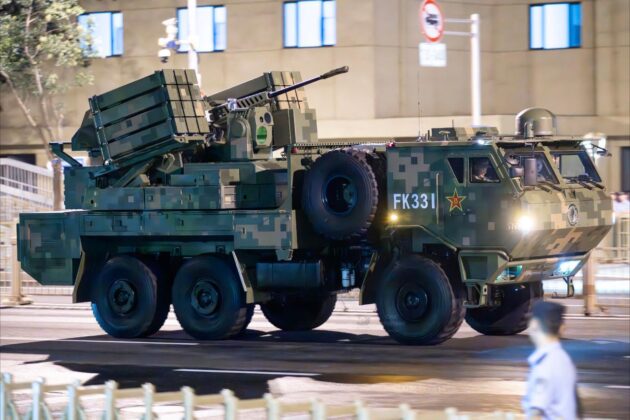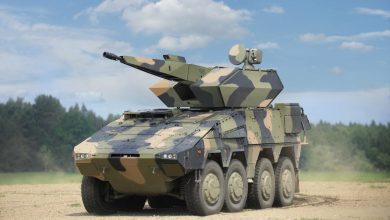China fields new FK-3000 anti-drone system

Beijing has begun fielding a new air defense system designed to counter mass drone attacks, as the People’s Liberation Army (PLA) adopts measures against the growing threat of low-cost, expendable unmanned aircraft.
The FK-3000, first showcased at the 2022 Zhuhai Air Show, was seen during rehearsals for an upcoming military parade. According to Chinese sources, the system was developed specifically to combat the rising risk of drone swarms, particularly low-altitude threats comparable to Iran’s Shahed drones, which have been widely used in conflicts.
Mounted on a three-axle, all-wheel-drive vehicle with an armored cab, the FK-3000 integrates a 30mm automatic cannon, surface-to-air missiles, and advanced fire-control equipment designed for all-weather operations. The system includes two launch pods, each carrying 12 short-range missiles, enabling it to engage multiple targets simultaneously.
Developers say the system can neutralize aerial threats at ranges from 300 to 12,000 meters. Its modular design allows the platform to be fitted with different missile types, including micro-missiles optimized for counter-drone missions.
The FK-3000 is intended for the protection of critical infrastructure and frontline positions, with its arsenal tailored to the drone threat. Observers note that China’s emphasis on counter-unmanned aerial systems reflects lessons from recent wars, where cheap but lethal drones have inflicted heavy damage on both military and civilian targets.
By combining autocannon fire with layered missile coverage, the FK-3000 provides redundancy against varied threats, from small quadcopters to larger, fixed-wing drones. The system’s configuration suggests that the PLA is prioritizing flexible, multi-layered defenses for both military units and strategic facilities.
Drone swarms present a unique problem for conventional air defense. Traditional systems designed for aircraft or cruise missiles often struggle to engage dozens of smaller, low-cost drones flying simultaneously. The FK-3000, Chinese officials say, is meant to close that gap by offering a specialized tool for mass engagements.
The growing importance of counter-drone technologies is evident worldwide. Russia, Ukraine, and NATO members have all accelerated development of short-range air defense systems to address the same challenge. China’s adoption of the FK-3000 underscores Beijing’s concern that adversaries could use swarming tactics to overwhelm traditional defenses.
The modular structure of the FK-3000 also suggests adaptability for future threats. Engineers highlight its ability to accept new missile types and potentially integrate advanced sensors and networked command systems. By building flexibility into the platform, the PLA aims to ensure long-term relevance against evolving aerial threats.
The FK-3000’s deployment represents China’s response to what defense analysts increasingly view as a central challenge in modern warfare: the mass use of low-cost drones.





